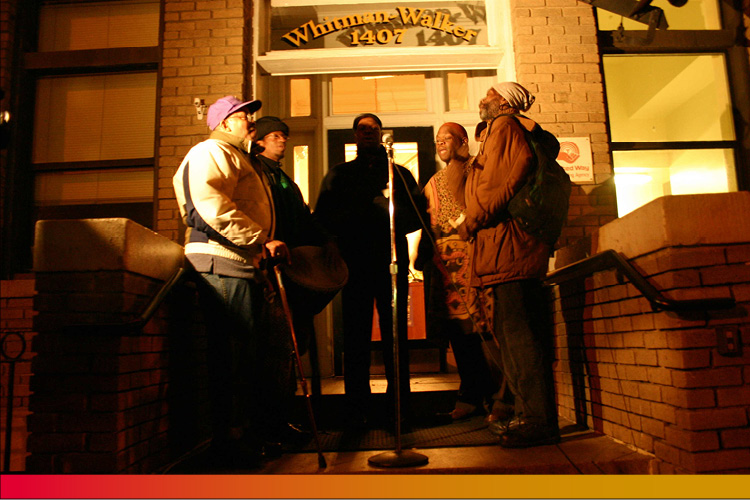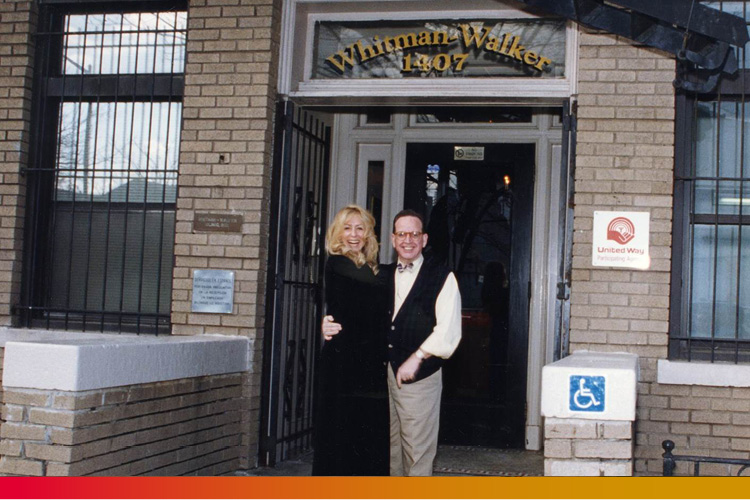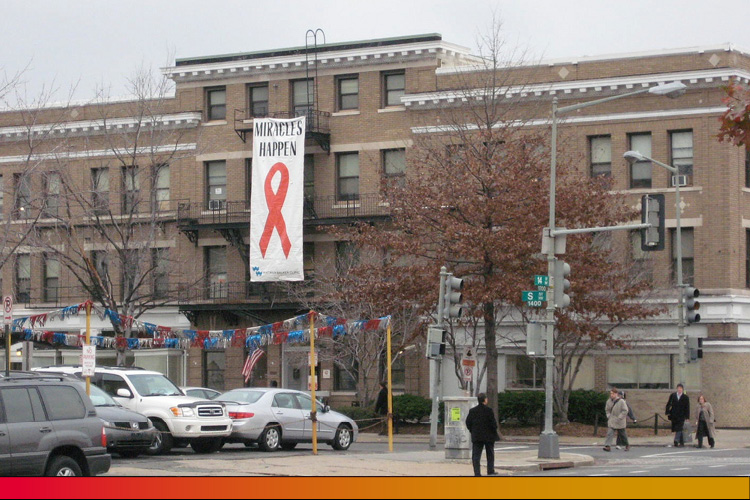As part of Whitman-Walker’s 40th anniversary, officially January 13, 2018, we’re sharing 40 stories to help tell the narrative of the Whitman-Walker community. This week we’re looking back at one of Whitman-Walker’s former homes: 1407 S Street, NW. Purchased in 1986 at the height of the HIV/AIDS epidemic, the location served as a home and pillar of hope in DC. It would house the growing Whitman-Walker Clinic and its clients for more than two decades. In 2008, Whitman-Walker sold the building and Anne Hull of The Washington Post chronicled the building’s history and significance. Read along to learn more about 1407 S Street.
In December 2008, The Washington Post covered Whitman-Walker’s move from 1407 S Street and what the building had meant to persons impacted by HIV/AIDS. Read the full article by Anne Hull on 1407 S Street here.
Five Quotes from Whitman-Walker, a Longtime Front in AIDS War, Moves Out by Anne Hull:
On the Physical Symbolism of the Building:
“If a physical space can capture the arc of an epidemic, the Whitman-Walker Clinic, at the corner of 14th and S streets, occupied the front lines of AIDS in Washington for 21 years. It was there when the average life expectancy for someone with AIDS was two years, and it was there when new drugs became available that made HIV infection a manageable disease to live with.”

“Just before lighting the candles Minister Keith Holder, Food Bank, and members of his Unity Fellowship Church in Baltimore leads the crowd in ‘Reach Out And Touch … Somebodies Hand.'” Photo by Elvert Barnes from the 2005 World AIDS Day Candlelight Vigil at 1407 S Street.
On the Need to Purchase the Building:
“Jim Graham, now a D.C. Council member, was Whitman-Walker’s executive director for 14 years, witnessing the first cases of AIDS in 1982, when gay men were getting sick with mysterious fatal infections. By the summer of 1984, the Washington area had recorded 125 AIDS cases and 56 deaths. In what was a prescient forecast of the growing plague, Graham brokered the purchase of a bigger building. Formerly the Evelyn Towers Apartments, the property had been renovated but still sat in the neglected blight of 14th Street.”
On Moving to the 14th Street Neighborhood in the 1980s:
“Some fought Graham on moving the clinic to a neighborhood known for drugs and prostitution, but the building had the space to offer the services he sensed would be necessary to launch a full-scale defense for AIDS patients: medical, dental, psychological and legal services.”

Actress Judith Light and, then Whitman-Walker executive director, Jim Graham stand in front of 1407 S Street.
On Hosting Memorials at the Clinic due to Discriminatory, Fearful Funeral Homes:
“Countless memorial services were held inside the clinic. A renegade atmosphere pervaded in those days. Some funeral homes refused to handle AIDS deaths, so when a funeral home that Whitman-Walker did business with donated a casket to the clinic, it was used in five different services. The practice violated every public health regulation. When staff members were notified of a federal on-site inspection, they hid the coffin under a large dropcloth, but unfortunately someone left a phone inside, and it began to ring during the inspection.”
On the Decor Appearances and Client Realities of 1407 S Street:
“The chandelier in the foyer hung over a grand marble staircase, a holdover from the old Evelyn Towers apartment days. The elegance belied the degrading reality of diarrhea and incontinence. The bathroom on the first floor was a place of wasting and humiliation. A washer and dryer were installed to launder soiled clothes. For infection control, the staff used a ratio of one part bleach to 10 parts water.”

A photo of 1407 S Street from December 2007, just one year before Whitman-Walker would move out. Photo by Ted Eytan.


